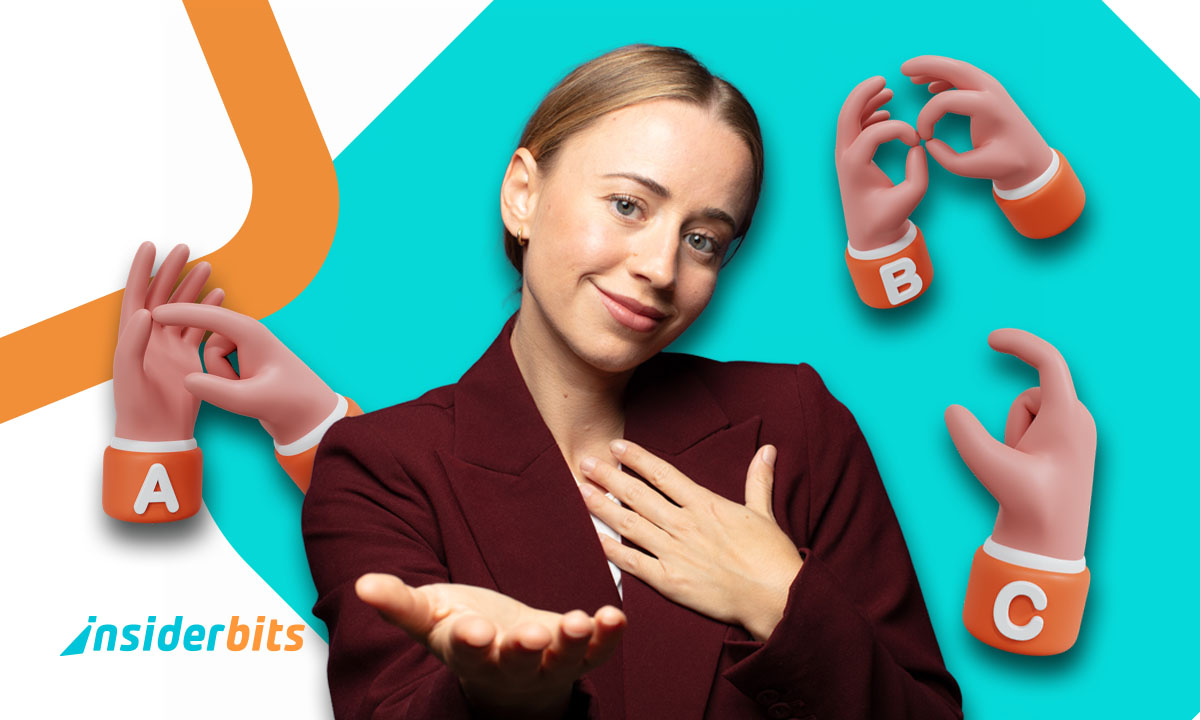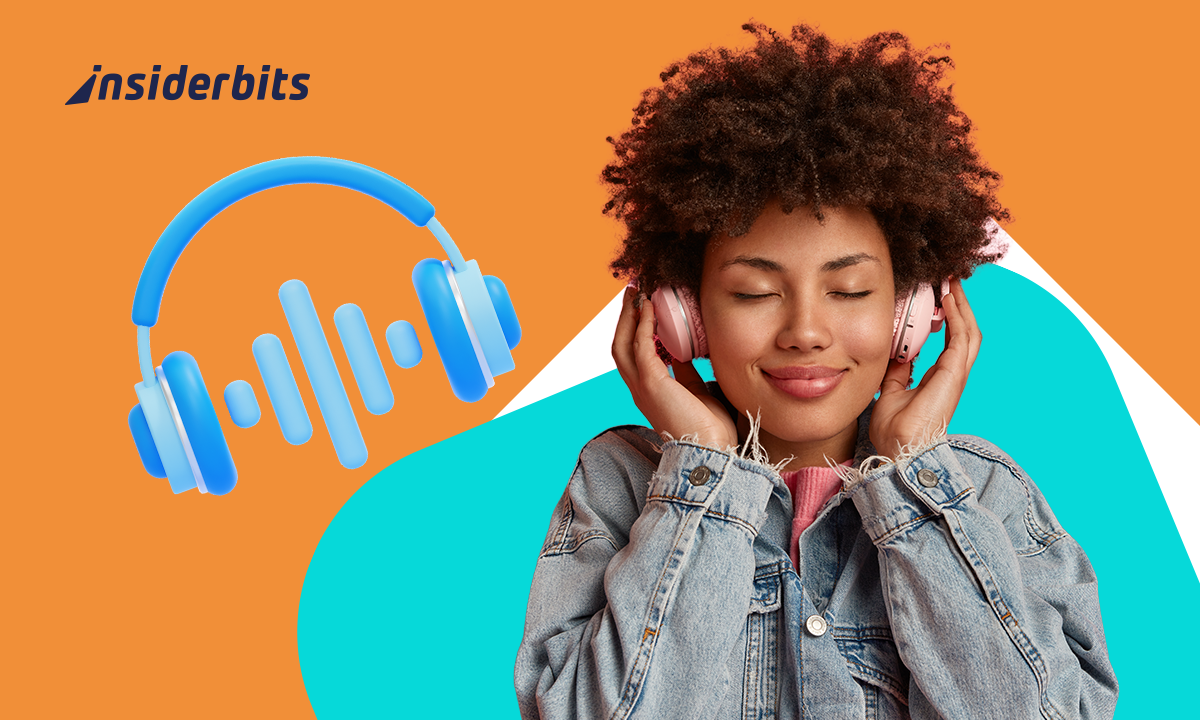Learning to connect through signs is gaining attention for good reason. More people want to learn sign language to strengthen bonds at home, at work, and in everyday life. Apps make it possible to practice on your phone with videos, quizzes, and helpful reminders, whether you’re just curious or hoping to communicate better with someone important to you.
This guide by Insiderbits highlights tools that support real growth while keeping things fun and consistent. Stick around and see which features actually help you keep learning every day.
Correlato: Language Exchange Apps for 2025: Connect and Learn Across Cultures
How to practice ASL, BSL and other sign languages
Learning a visual language takes a different kind of focus. You’re not just memorizing words but gestures, expressions, and rhythm. It’s active, physical, and surprisingly fun to get into.
Most apps introduce new signs with short videos, followed by games or review tools to help you retain them. That mix of input and repetition is what helps people truly learn sign language.
What matters is consistency. Whether you’re studying a few signs a day or practicing full conversations, these tools work best when connected to real-world goals and habits.
ASL first: why most apps focus on American Sign Language
American Sign Language is the most commonly taught visual language online because it’s widely used across the United States and has a strong presence in Deaf education and media.
Apps center their curriculum on ASL due to demand, resources, and cultural familiarity. That focus gives beginners a solid foundation to understand structure and build fluency over time.
BSL and beyond: what to expect from app language options
Some platforms mention British Sign Language or other regional variants, but most lack dedicated tracks for them. Coverage is mostly limited to glossaries or brief comparative lessons.
While ASL dominates, BSL, Auslan, or Libras is growing. Interest from foreign learners is encouraging developers to expand and improve how these languages are represented.
Learning sign language for connection, work, or self-growth
Many people start learning to communicate better with Deaf family members or friends. Others begin out of curiosity or to support their roles in healthcare, education, or social work.
To learn sign language with meaning, it helps to tie your practice to real experiences. The more personal your reason, the more likely you’ll stay committed and grow confident.

The best free apps to learn sign language right now
Finding quality tools to study visual languages doesn’t mean spending a fortune. Several apps offer structured lessons, fun practice tools, and expert insights completely free of charge.
These platforms combine video, games, and grammar tips to support real progress. Beginners and returning learners can find something useful to strengthen their skills and stay engaged.
Lingvano – Learn Sign Language
Lingvano makes it easy to build confidence from your very first signs. With short video lessons and real-life dialogues, it’s a practical and fun way to learn sign language.
The app includes over 600 lessons, slow-motion features, quizzes, and an interactive mirror tool. It was built with Deaf educators and rewards practice with progress stars and streaks.
Lingvano is a Zero Project Award winner for accessibility and a proud IAAP member. Its design supports both casual learners and anyone serious about reaching real conversational skills.
Lingvano’s best features
- Interactive video lessons: learn vocabulary, grammar, and real conversation skills through short lessons that feature native signers and adjustable playback speed;
- Practice tools and quizzes: reinforce what you’ve learned with vocabulary trainers, an interactive mirror, end-of-chapter tests, and a built-in sign language dictionary;
- Motivation through progress tracking: earn stars, unlock rewards, and maintain daily streaks that encourage consistent practice without pressure or overwhelming tasks.
4.9/5
SignSchool
| Prezzi: | Gratuito. |
| Disponibile per: | Web. |
SignSchool was built by friends who wanted a better way to connect through ASL. It’s friendly, flexible, and built to help anyone learn sign language with less friction.
The platform uses short video lessons, real signers, and themed categories to keep learning clear and focused. Quizzes and review tools reinforce new signs at your own pace.
Backed by Princeton University and recognized for innovation, SignSchool offers a learning experience shaped by real needs, not just academic goals or technical checklists.
SignSchool’s best features
- On-demand learning by category: choose themed lessons like food, school, or feelings and build your vocabulary through everyday topics tailored for real-life use;
- Video library with native signers: watch thousands of signs demonstrated by fluent users to better understand natural signing styles and real-world facial expressions;
- Built-in review and practice tools: strengthen retention with sign-matching games, quizzes, and repeat exposure designed to help learners track improvement.
ASL Bloom
| Prezzi: | Free, with subscription plans available. |
| Disponibile per: | Android. |
ASL Bloom makes visual learning simple with short lessons, playful interactions, and a clean design. It’s a relaxed way to build new skills and gradually learn sign language.
The app features 20 themed modules, over 120 lessons, and 1300 signs. With grammar tips, practice quizzes, and AI-powered reviews, learners stay on track without getting overwhelmed.
Designed for everyday use, ASL Bloom supports those learning for work, family, or curiosity. Progress feels natural thanks to clear goals, spaced repetition, and context-based sign practice.
ASL Bloom’s best features
- Modular structure: navigate 20 themed modules with clear outcomes, making it easier to build vocabulary through real-life topics like greetings, emotions, and daily routines;
- Gamified lessons with AI support: strengthen retention using interactive practice, spaced repetition, and review features that adjust based on your progress and mistakes;
- Grammar tips and cultural context: learn sign structure and Deaf community insights alongside vocabulary to build a stronger foundation for real-world understanding.
4.6/5
Correlato: TOP 3 Best Apps for Learning Sign Language
Fun games and quizzes that improve retention
Games and quizzes support real learning by keeping users active and focused. Many apps use them to help people learn sign language in a relaxed and consistent way.
These tools break down repetition into smaller, more engaging moments. Sign-matching, flashcards, and interactive tests all work together to reinforce what’s already been seen.
Playful formats make progress feel less rigid. Instead of passively reviewing signs, learners engage with them through short bursts of activity that strengthen memory and build confidence.
Flashcards, memory games, and sign-matching tools
Flashcards are quick to use and easy to repeat. Matching signs to visuals helps learners connect meaning and form, especially when combined with other active review tools.
Memory games are built into several lessons to help users stay sharp. These short tasks challenge recognition skills and help bring older signs back into practice naturally.
The role of repetition and reward in language learning
Earning stars or completing streaks gives a clear reason to keep practicing. These rewards build habits that support those trying to learn sign language for any personal reason.
Repeated exposure matters. Quizzes and review challenges guide users back to difficult signs until recognition improves, keeping memory fresh without relying on passive repetition.
Learning through play: does it really work?
Playful lessons create space for relaxed engagement. Games allow learners to interact with signs without stress, helping attention stay steady through short, focused activities.
When combined with clear goals, interactive games give learners a reason to come back. Practice becomes consistent, signs are recalled more easily, and progress feels more natural.
Apps that connect learners with the deaf community
Connecting with the Deaf community builds cultural understanding alongside signing skills. Apps that highlight real people and stories make the learning experience feel more personal.
Some platforms help users learn sign language while promoting Deaf perspectives. By sharing native signing styles and authentic expressions, these apps offer more than technical lessons.
This kind of exposure helps learners move beyond memorization. Seeing how signs are used in context encourages better awareness of the values behind the language being studied.
Real signers, real stories: Why authentic exposure matters
Watching native signers in action helps understand more than vocabulary. Facial expressions, rhythm, and cultural context become clearer through real conversations shown in lessons.
Apps that feature Deaf people signing bring the language to life. This makes learning feel more connected and encourages users to pay attention to natural pacing and gestures.
Can an app replace community interaction?
Digital tools are helpful, but they have limits. Real fluency often comes from communicating with Deaf individuals, observing live signing, and responding in real-time situations.
Practicing in person strengthens expression and cultural understanding. Apps provide the foundation, but human connection gives signing depth that no screen can fully replicate.
How Lingvano and others involve Deaf educators and voices
Lingvano includes video lessons led by Deaf teachers. This ensures the language is presented accurately and respectfully while helping learners truly learn sign language with real context.
Other apps like ASL Bloom also bring Deaf voices into their lessons. This representation helps normalize perspectives and shows learners how signs vary in daily conversations.
Correlato: Best Apps to Speak Like a Local – Language Learning for Travelers
Progress tracking: how to stay consistent
Consistency makes a big difference in language learning. Apps that track your progress help maintain focus by giving small goals, encouraging check-ins, and showing how far you’ve come.
Progress tools don’t need to be complicated. Stars, streaks, and module checkpoints keep practice sessions manageable. They’re also helpful for building habits that fit into everyday life.
Those who learn sign language benefit from clear structure and feedback. When signs are reviewed often and tied to milestones, learners stay engaged and know where to focus next.
Streaks, stars, and structure: Motivators that actually work
Daily streaks push learners to keep going, even on low-energy days. Stars and achievements offer quick rewards and make each completed lesson feel like a small win.
Lingvano uses streak freezes and milestones to keep progress steady. ASL Bloom’s lesson structure gives learners a sense of direction without overwhelming them with too many choices.
Why visual feedback and review tools boost retention
Visual feedback highlights what needs work without guessing. It’s easier to stay on track when review tools show which signs are mastered and which need more attention.
Flashcards, recaps, and interactive practice reinforce memory. These tools make signs stick by spacing out repetition and encouraging active recall instead of passive review.
Measuring progress when fluency takes time and practice
To learn sign language with lasting results, steady review matters more than speed. Apps that organize lessons into modules help learners focus without rushing or skipping key points.
Progress tracking offers a sense of rhythm. Each completed lesson or reviewed sign builds confidence and adds structure to something that often feels abstract in the early stages.
From first signs to real conversations
Building confidence with sign language starts with small steps. The right app can turn everyday practice into something meaningful, useful, and surprisingly fun to stick with long term.
This guide was created by Insiderbits to help anyone curious about visual communication find better ways to learn sign language without pressure or the need for expensive programs.
Looking for more tools that fit your goals and pace? Keep browsing Insiderbits and discover more practical picks for learning, living, and getting things done your way.





